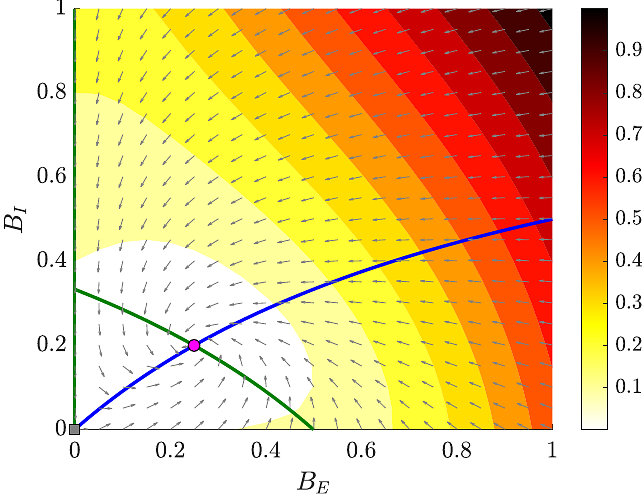Using compartmental models to understand excitation-inhibition imbalance in epilepsy

Using compartmental models to understand excitation-inhibition imbalance in epilepsy
Kamaraj, A. K.; Szuromi, M. P.; Galvis, D.; Stacey, W. C.; Skeldon, A. C.; Terry, J. R.
AbstractEpileptic seizures are characterized by abnormal synchronous bursting of neurons. This is commonly attributed to an imbalance between excitatory and inhibitory neurotransmission. We introduce compartmental models from epidemiology to study this interaction between excitatory and inhibitory populations of neurons in the context of epilepsy. Neurons could either be bursting or susceptible, and the propagation of action potentials within the brain through the bursting of neurons is considered as an infection spreading through a population. We model the recruitment of neurons into bursting and their subsequent decay to susceptibility to be influenced by the proportion of excitatory and inhibitory neurons bursting, resulting in a two population Susceptible - Infected - Susceptible (SIS) model. This approach provides a tractable framework to inspect the mechanisms behind seizure generation and termination. Considering the excitatory neurotransmission as an epidemic spreading through the neuronal population and the inhibitory neurotransmission as a competing epidemic that stops the spread of excitation, we establish the conditions for a seizure-like state to be stable. Subsequently, we show how an activity-dependent dysfunction of inhibitory mechanisms such as impaired GABAergic inhibition or inhibitory-inhibitory interactions could result in a seizure even when the above conditions are not satisfied.